SALT!
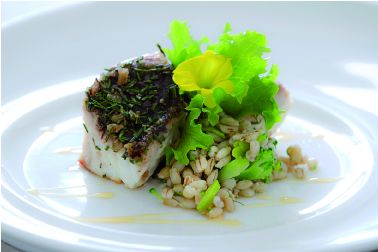
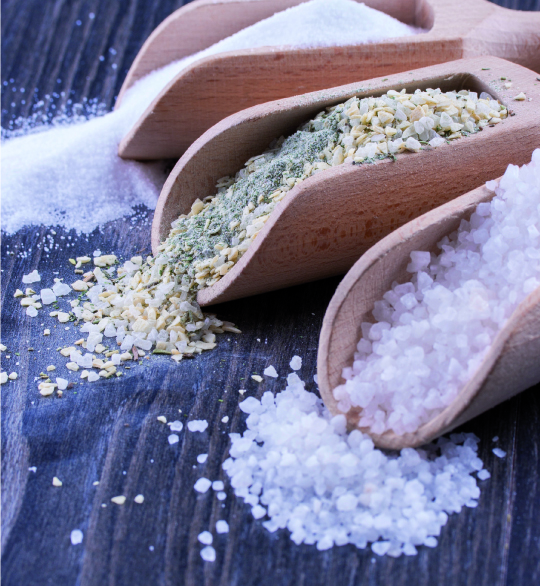 A few years ago I attended a food show with my friend and co-worker Jennifer Porter. The food shows we attended were huge, but there was always one ‘hot’ product—the item of the year. That year, it seemed that every third booth was a salt vendor hawking salt in every color from every region of the world. The salts were all beautifully packaged with bright labels and squared off jars and cork lids. I could just picture them in a beautiful display in my shop.
A few years ago I attended a food show with my friend and co-worker Jennifer Porter. The food shows we attended were huge, but there was always one ‘hot’ product—the item of the year. That year, it seemed that every third booth was a salt vendor hawking salt in every color from every region of the world. The salts were all beautifully packaged with bright labels and squared off jars and cork lids. I could just picture them in a beautiful display in my shop.
We asked to taste it! And, after a moment of disbelief, the salesperson reluctantly opened a few containers to let us sample. I suspect no one had ever asked to taste the salt, they had just taken the salesperson’s word for taste and bought the pretty jars.
As you can imagine, we didn’t last long. It was difficult to detect the subtle nuances between different salts straight from a spoon. Worst of all, our palates tired quickly. But we did come away with a better understanding of salt, and the variety of salts available.
Cooking salt can be separated into three categories based on the way it is processed:
Refined salt: Made either through evaporation or mining, these salts are purified and used as table salt or in a variety of manufacturing processes.
Unrefined salt: Unrefined salt is a product of evaporation, which is the oldest method of harvesting salt. It carries minerals associated with the place where it was harvested, so each region’s salt has a slightly different taste. Some salt crystals have different shapes, from pyramidal to flakes, that give them a different texture and affect how quickly the salt melts. Sometimes the minerals lend a slight color to the salt, from grey to pink tones.
Salt with additives: Iodine is added to table salt for health reasons. Other ingredients, like truffles, seaweed, lemon or saffron can be added to unrefined salt to boost their complementary flavors. Roasted and smoked salts are also popular.
Although a small amount of salt is necessary for good health, too much salt in your diet is linked to all kinds of health problems, including high blood pressure and kidney stones. The majority of salt consumed in the American diet comes from processed foods, like bread, cereals and snacks. The salt we use in our cooking at home is not likely the culprit. As with everything that we use in small amounts, it’s worth using a salt that will really make a difference.
In my kitchen, I use three salts: kosher salt for cooking and baking, and sea salt and smoked salt for finishing. I find that the iodized table salt that I grew up with has a chemical taste that stands out to me, so I don’t use it.
Some bakers frown on using kosher salt in baked goods, worrying that the larger crystals won’t dissolve. Actually, I find a little salty crunch in my pie crust or cookies is a taste enhancer (and I draw the line at stocking a fourth type of salt!). I use kosher salt in the water when I’m blanching vegetables because it helps them keep a bright color while cooking. I use kosher salt as a brine for meats purchased from the farmers’ market or butcher (those from the grocery store have already been injected with saline).
I have a small container of sea salt right on the counter for everyday use. Often, when we’re grilling meat or vegetables, I’ll coat the item with a small amount of olive oil, and save the salt and pepper for when the food comes off the grill. Then, the flavor and crunch of a good quality sea salt (my favorite is Maldon) with a touch of freshly ground pepper is the perfect complement to the crust and sizzle from the grill. A good piece of steak or a fresh vegetable can barely be improved upon with just this simple preparation.
I usually save the smoked salt for chocolate and caramel desserts; just a little sprinkle on top adds the perfect touch.
I’ve shared three salty recipes: try them all, but one at a time. Everything in moderation!
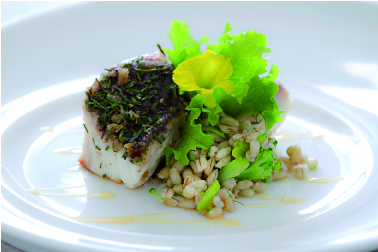 Whole Fish Baked in a Salt Crust (serves 2)
Whole Fish Baked in a Salt Crust (serves 2)
A whole fish is encased in salt, subtly flavoring the fish and holding in moisture. The hard salt crust makes for a dramatic presentation.
One 2 1/2 – 3-pound whole fish (snapper or sea bass) cleaned and gutted, head and tail intact.
1/2 lemon, sliced thin
Sprig of thyme
2 bay leaves
5 egg whites
3 cups kosher salt
Melted butter or olive oil to taste
Preheat oven to 450.
Place lemon and herbs in the cavity of the fish.
In a medium bowl, combine egg whites and salt, mixing well to combine. Place a half cup of the salt mixture on an ovenproof platter. Place fish on top and cover the fish with the rest of the mixture, patting around to close any openings.
Bake in preheated oven for 30 minutes. Remove and let sit for 7 minutes. Strike the top of the salt crust with a spoon to crack the crust. Carefully remove the crust and skin from the fish. Serve one filet per person, drizzled with a little melted butter or olive oil.
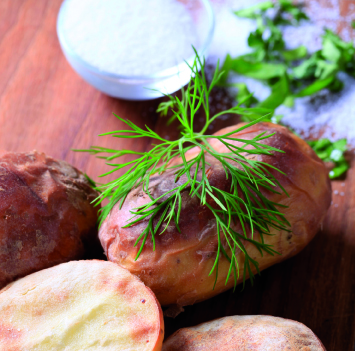 Potatoes Baked in Salt (serves 4)
Potatoes Baked in Salt (serves 4)
The salt flavors the potatoes and pulls moisture out, leaving potatoes fluffy and delicious. The salt can be re-used for another batch of potatoes, just keep it in a bag until the next time!
16 small potatoes like fingerling,
Yukon gold or red
About two cups kosher salt
Butter
Preheat the oven to 350.
In an oven-proof baking dish, pour enough salt to make a 1/2 inch layer on the bottom. Place potatoes on top of salt, leaving enough room so they’re not touching. Pour remaining salt over (they don’t have to be totally covered).
Bake in preheated oven for 45-50 minutes. Remove potatoes from salt, brushing away the excess. Toss hot potatoes with butter before serving.
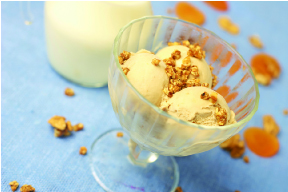 Salted Caramel Ice Cream (makes 4-6 servings)
Salted Caramel Ice Cream (makes 4-6 servings)
This is our favorite flavor to make and my boys love adding in treats like crushed chocolate-covered pretzels, toasted pecans or miniature Rolo candies.
1 cup sugar
1 1/4 cup cream
1/2 teaspoon fresh lemon juice
1/2 teaspoon vanilla
2 cups milk
3 yolks from large eggs
1/2 teaspoon smoked sea salt
1 cup of your favorite crushed chocolate candy, salty snacks or nuts, optional
In a small heavy saucepan, heat sugar over medium heat until it melts. Continue to heat, until it reaches a medium amber color. Resist the urge to stir the sugar after it’s melted. If the sugar is darkening in one spot, swirl the pan. Remove from the heat and add the cream. The caramel will bubble and spurt, then finally calm down. Stir to dissolve any lumps. Add the lemon juice and vanilla and set aside.
In a different pan, warm the milk. In a medium bowl, whisk the yolks. When the milk is almost simmering, add a half cup of warm milk to the yolks, whisking all the time. Add another half cup milk to the yolks, whisking. And again, until all of the warmed milk has been incorporated into the yolks. Take your time with this process and don’t add too much warm milk to the yolks at one time or you’ll make scrambled eggs! Begin heating, stirring constantly, until the mixture reaches 170˚ on a thermometer. Pour through a fine strainer into a bowl and add the caramel mixture.
Set the bowl with the custard mixture into a larger bowl filled with ice and stir regularly until its cooled. Chill for at least six hours in the fridge.
Freeze in an ice cream maker according to the manufacturer’s directions. When it’s almost solid, stir in salt and one cup of one of the suggested add-ins, if desired. Place in a container and freeze until firm.






